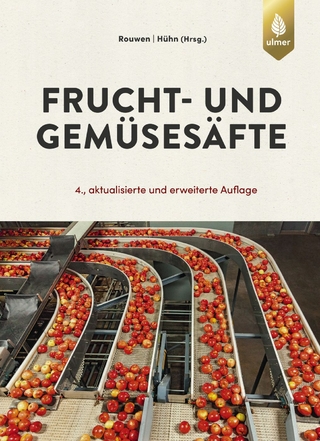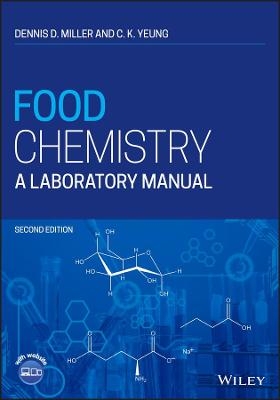
Food Stabilisers, Thickeners and Gelling Agents
Wiley-Blackwell (Verlag)
978-1-4051-3267-1 (ISBN)
- Titel z.Zt. nicht lieferbar
- Versandkostenfrei innerhalb Deutschlands
- Auch auf Rechnung
- Verfügbarkeit in der Filiale vor Ort prüfen
- Artikel merken
Stabilisers, thickeners and gelling agents are extracted from a variety of natural raw materials and incorporated into foods to give the structure, flow, stability and eating qualities desired by consumers. These additives include traditional materials such as starch, a thickener obtained from many land plants; gelatine, an animal by-product giving characteristic melt-in-the-mouth gels; and cellulose, the most abundant structuring polymer in land plants. Seed gums and other materials derived from sea plants extend the range of polymers. Recently-approved additives include the microbial polysaccharides of xanthan, gellan and pullulan. This book is a highly practical guide to the use of polymers in food technology to stabilise, thicken and gel foods, resulting in consistent, high quality products. The information is designed to be easy to read and assimilate. New students will find chapters presented in a standard format, enabling key points to be located quickly. Those with more experience will be able to compare and contrast different materials and gain a greater understanding of the interactions that take place during food production. This concise, modern review of hydrocolloid developments will be a valuable teaching resource and reference text for all academic and practical workers involved in hydrocolloids in particular, and food development and production in general.
Dr Alan Imeson, FMC BioPolymer, London, UK
Preface ix
Acknowledgements xi
Contributors xii
1 Introduction 1
Dennis Seisun
1.1 Introduction 1
1.2 Functional properties 3
1.3 Regulatory environment 4
1.4 Commercial environment 6
1.5 Future developments 10
2 Acacia Gum (Gum Arabic) 11
Francis Thevenet
2.1 Introduction 11
2.2 Origin and purification process 12
2.3 Chemical structure 13
2.4 Applications 15
2.5 Health benefits 26
2.6 Future developments 28
3 Agar 31
Alan Imeson
3.1 Introduction 31
3.2 Raw materials 32
3.3 Production 33
3.4 Composition and structure 36
3.5 Functional properties 38
3.6 Applications 41
3.7 Future developments 47
4 Alginates 50
Trond Helgerud, Olav Gåserød, Therese Fjæreide, Peder O. Andersen, Christian Klein Larsen
4.1 Introduction 50
4.2 Production 50
4.3 Chemical composition 52
4.4 Functional properties 54
4.5 Gel formation techniques 58
4.6 Applications 62
4.7 Thickening and stabilising 65
4.8 Dairy products 66
4.9 Film formation 66
4.10 Encapsulation 67
4.11 Other applications 67
4.12 Summary 69
5 Carrageenan 73
William R. Blakemore and Alan R. Harpell
5.1 Introduction 73
5.2 Raw materials 74
5.3 Manufacturing 74
5.4 Regulation 76
5.5 Structure 78
5.6 Functional properties 79
5.7 Food applications 88
6 Cellulose Derivatives 95
Mary Jean Cash and Sandra J. Caputo
6.1 Introduction 95
6.2 Raw materials and processing 96
6.3 Composition and chemistry 96
6.4 Food applications 106
6.5 Future developments 113
7 Gelatine 116
Paul Stevens
7.1 Introduction 116
7.2 Manufacturing process 117
7.3 Regulations: European Union and the USA 120
7.4 Chemical structure and reactivity 121
7.5 Physicochemical properties 128
7.6 Food applications 132
7.7 Future developments 143
8 Gellan Gum 145
Raymond Valli and Ross Clark
8.1 Introduction 145
8.2 Manufacture 145
8.3 Chemical composition 146
8.4 Functional properties 147
8.5 Regulatory status 159
8.6 Applications 159
8.7 Future developments 165
9 Gum Tragacanth and Karaya 167
Jenny M. Mayes
9.1 Gum tragacanth 167
9.2 Gum karaya 174
10 Inulin 180
Rudy Wouters
10.1 Introduction 180
10.2 Resources and raw materials 181
10.3 Production 182
10.4 Chemical structure 183
10.5 Physical and chemical properties 184
10.6 Principle of fat replacement 191
10.7 Physiological properties 193
10.8 Applications 194
11 Konjac Glucomannan 198
Jean-Marc Parry
11.1 Introduction 198
11.2 Raw materials 200
11.3 Processing 202
11.4 Structure 204
11.5 Functional properties 205
11.6 Food applications 212
11.7 Nutritional applications 213
11.8 Future developments 214
12 Microcrystalline Cellulose 218
Domingo C. Tuason, Gregory R. Krawczyk and Greg Buliga
12.1 Introduction 218
12.2 mcc product technologies 219
12.3 Manufacturing process 219
12.4 Colloidal MCC product line extensions 220
12.5 Physical modification – the alloying concept 221
12.6 Physical and functional properties 222
12.7 Legislation and nutrition 225
12.8 Food applications 225
12.9 Future developments 235
13 Pectin 237
Sarah M. Brejnholt
13.1 Introduction 237
13.2 Raw materials 239
13.3 Processing 241
13.4 Composition 243
13.5 Chemical properties 246
13.6 Applications 252
13.7 Future developments 262
14 Pullulan 266
Hiroto Chaen
14.1 Introduction 266
14.2 Raw materials 267
14.3 Production 268
14.4 Functional properties 268
14.5 Food applications 270
14.6 Future developments 273
15 Seed Gums 275
Willem Wielinga
15.1 Introduction 275
15.2 Raw materials 275
15.3 Production 280
15.4 Composition 281
15.5 Functional properties 286
15.6 Further developments 289
15.7 Derivatised seed gums for technical applications 291
16 Starch 293
Paul Sheldrake
16.1 Introduction 293
16.2 Raw materials 294
16.3 Processing 296
16.4 Composition and structure 298
16.5 Thickening and gelling properties 302
16.6 Starch modification 306
16.7 Food applications 312
16.8 Conclusions 323
17 Xanthan Gum 325
Graham Sworn
17.1 Introduction 325
17.2 Production 325
17.3 Chemistry 326
17.4 Solution preparation 327
17.5 Rheology 329
17.6 Stability and compatibility 331
17.7 Interactions 335
17.8 Applications 339
Index 343
A colour plate section falls between pages 50 and 51
| Erscheint lt. Verlag | 13.11.2009 |
|---|---|
| Verlagsort | Hoboken |
| Sprache | englisch |
| Maße | 178 x 252 mm |
| Gewicht | 943 g |
| Themenwelt | Technik ► Lebensmitteltechnologie |
| Weitere Fachgebiete ► Land- / Forstwirtschaft / Fischerei | |
| Schlagworte | Lebensmitteltechnik |
| ISBN-10 | 1-4051-3267-1 / 1405132671 |
| ISBN-13 | 978-1-4051-3267-1 / 9781405132671 |
| Zustand | Neuware |
| Haben Sie eine Frage zum Produkt? |
aus dem Bereich


